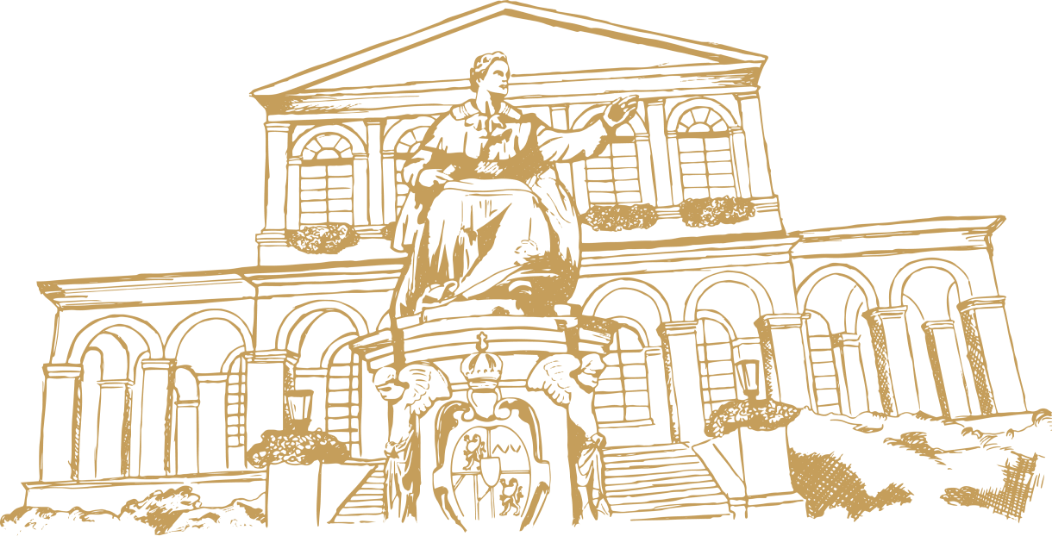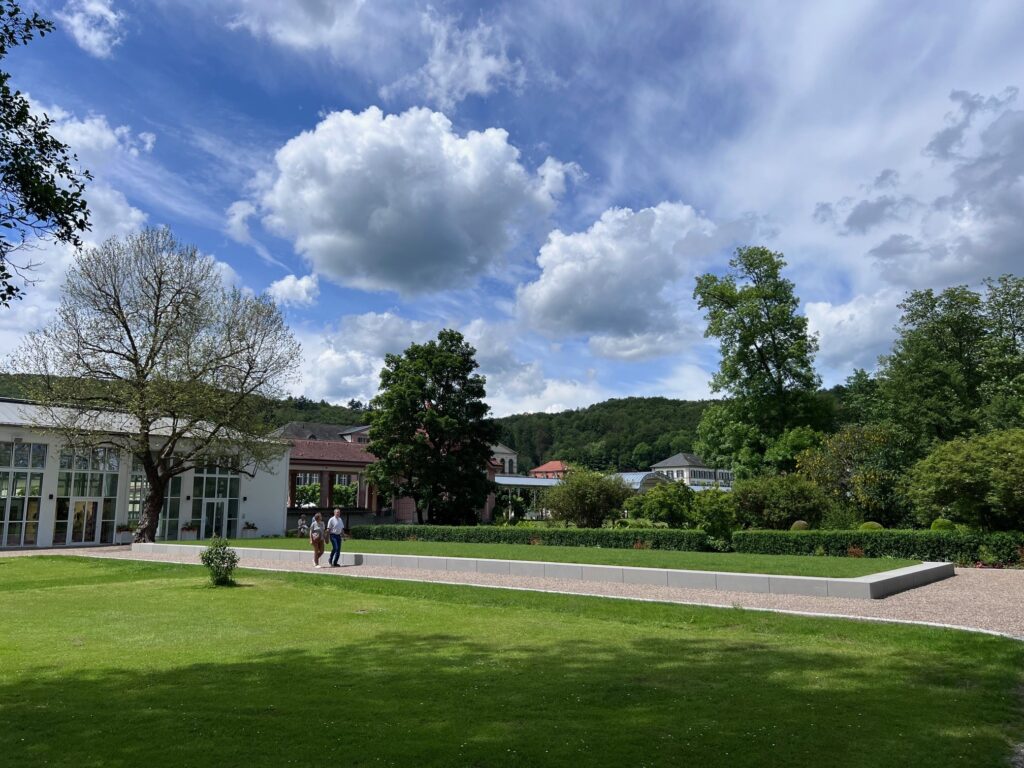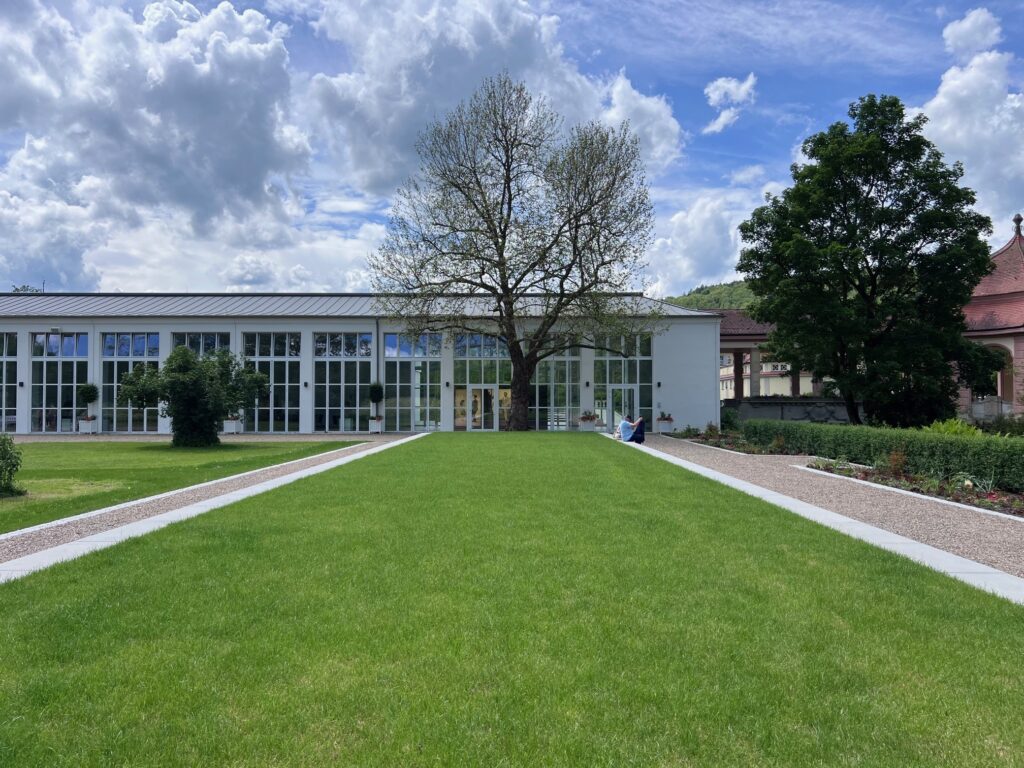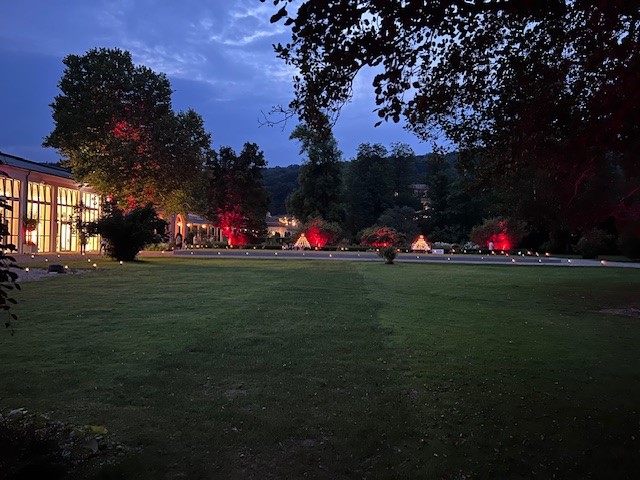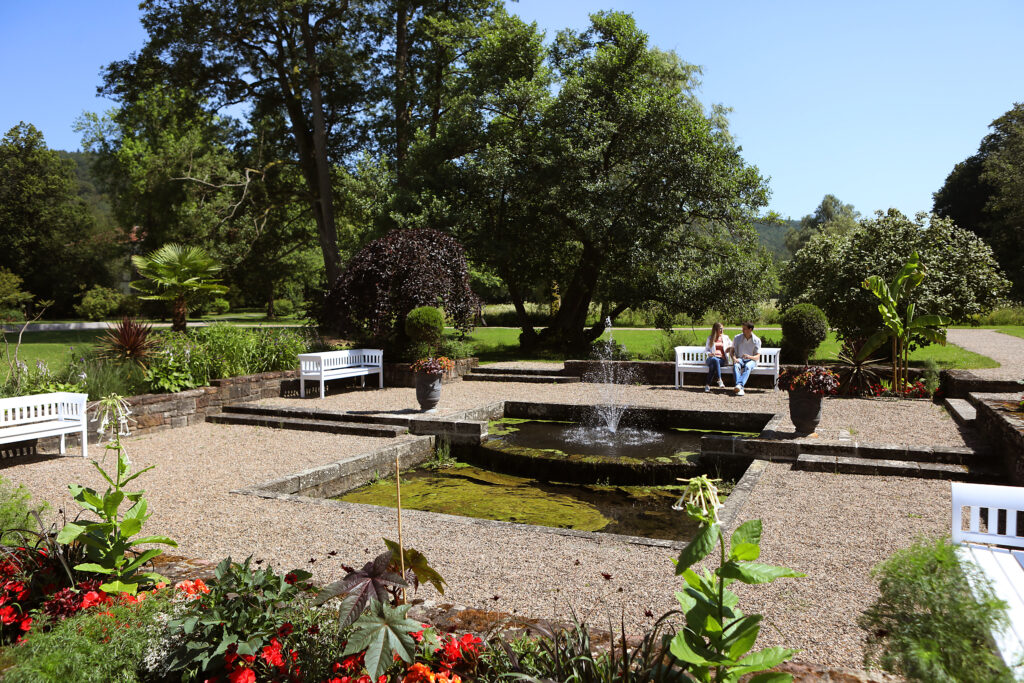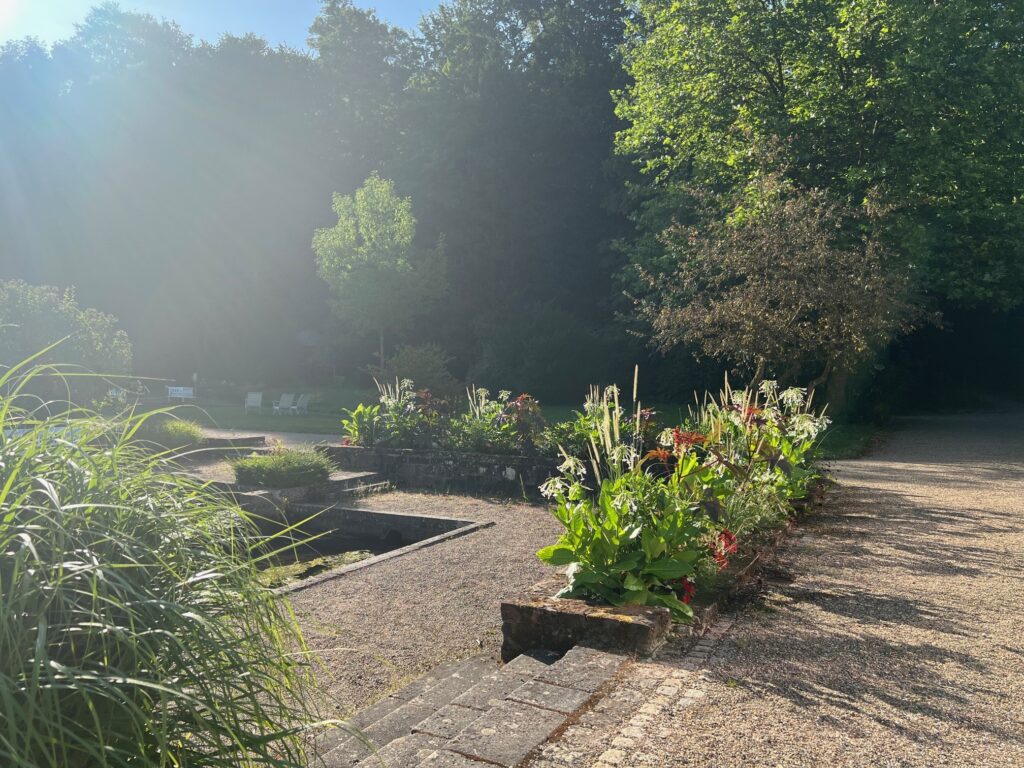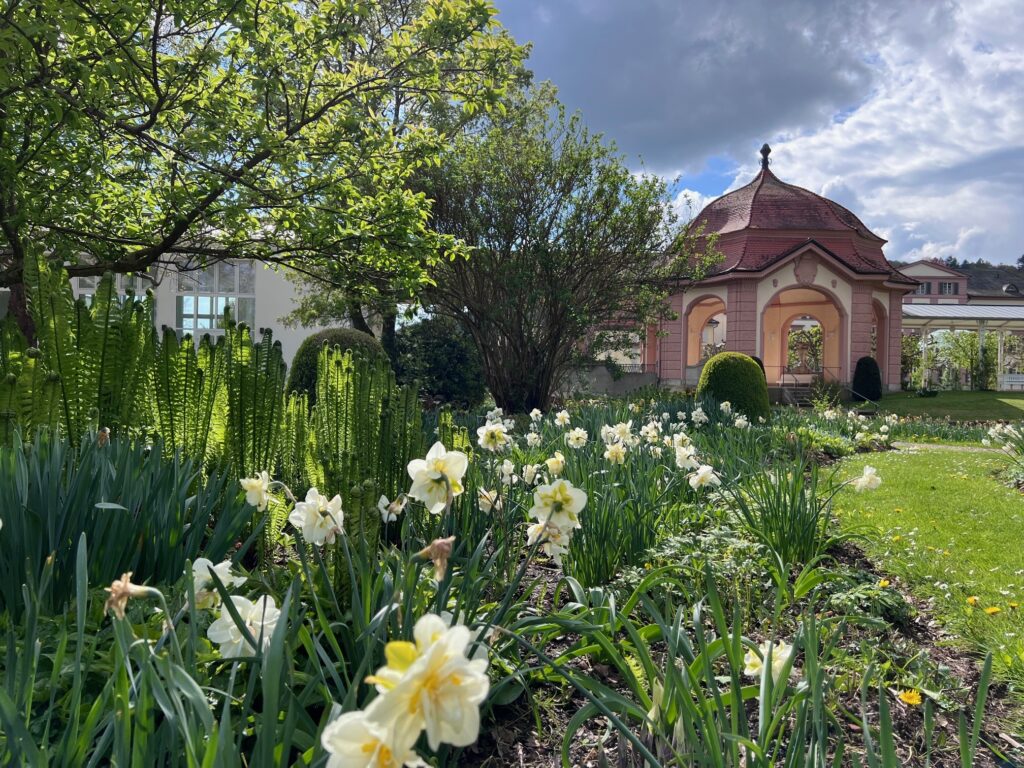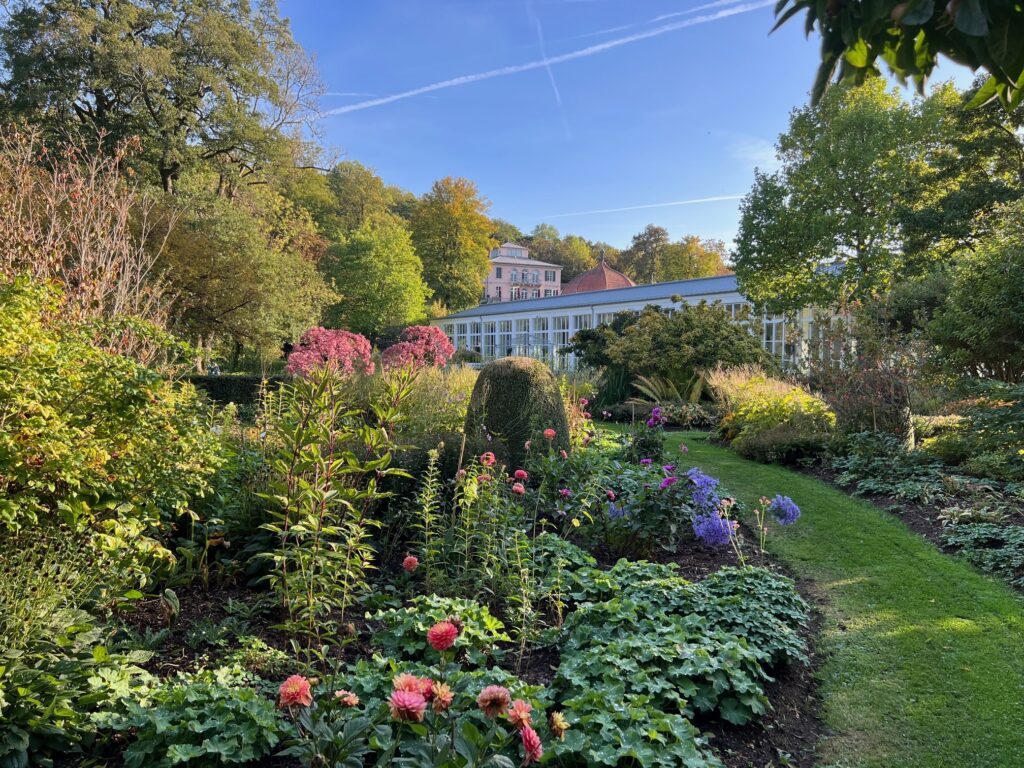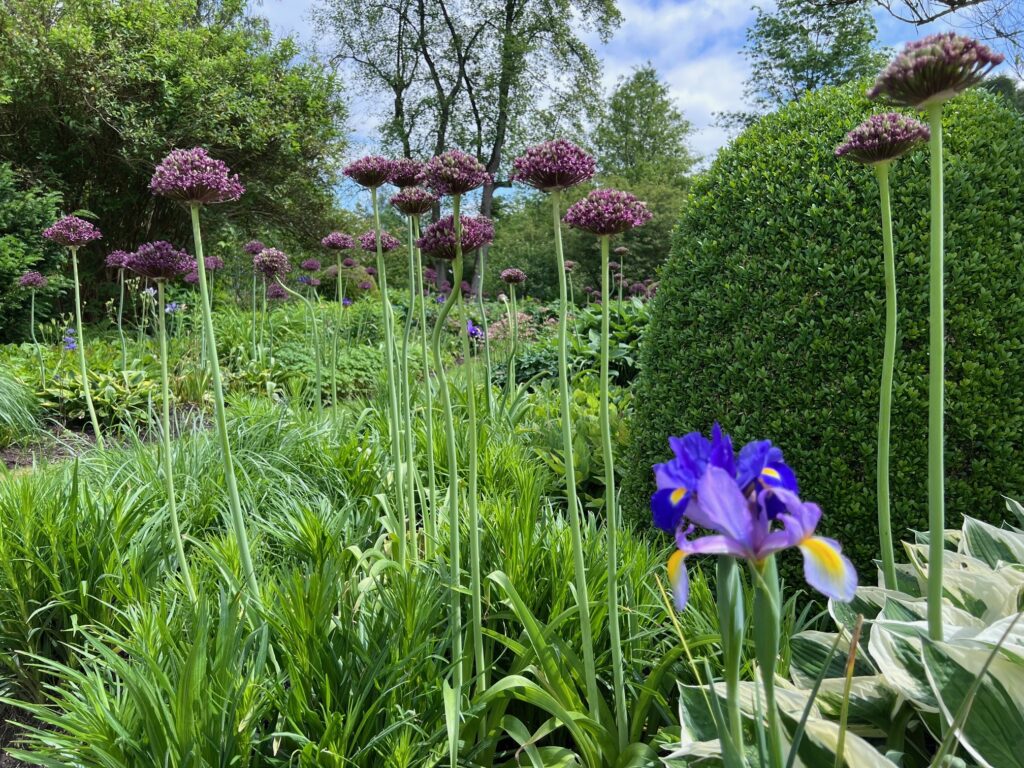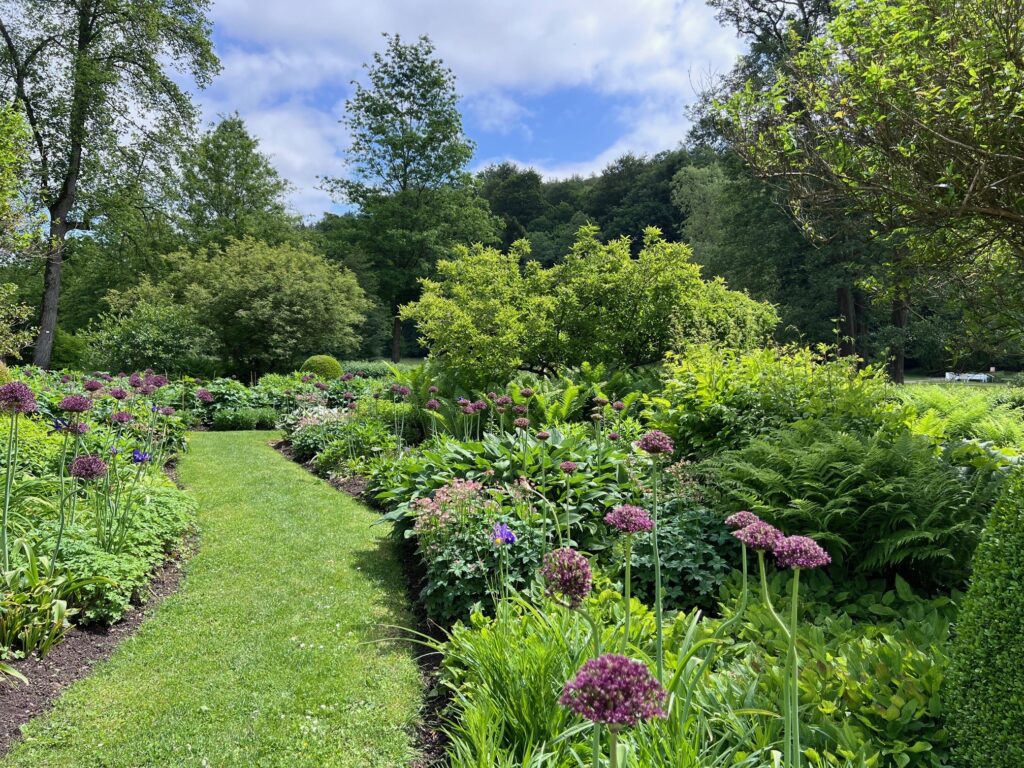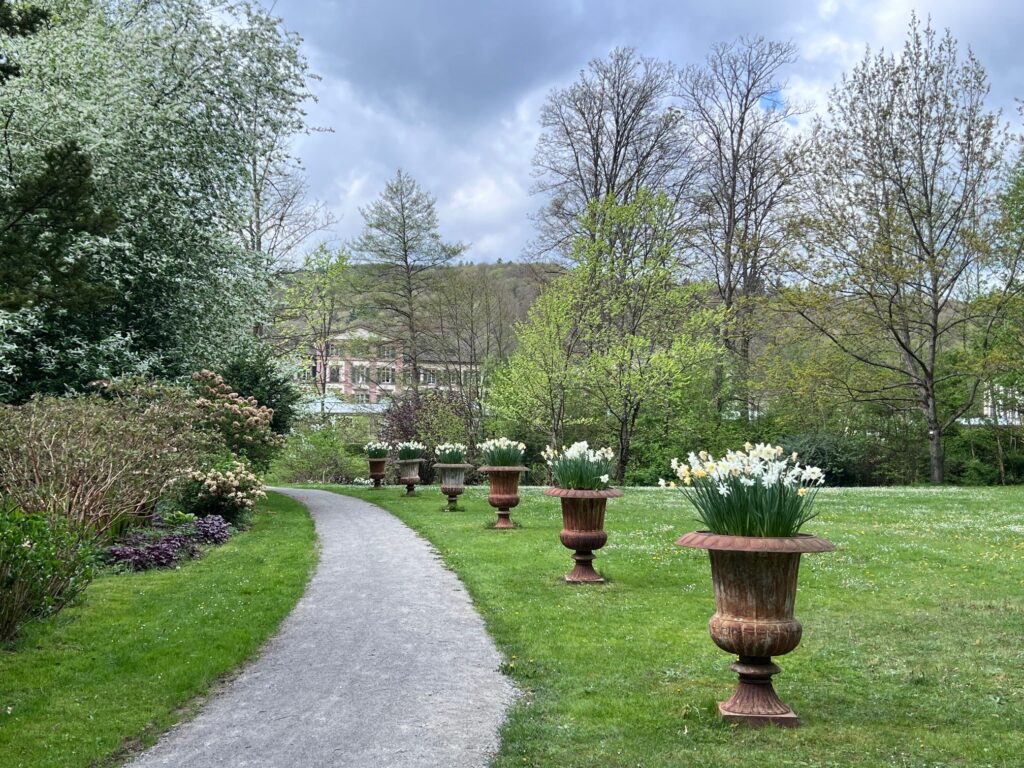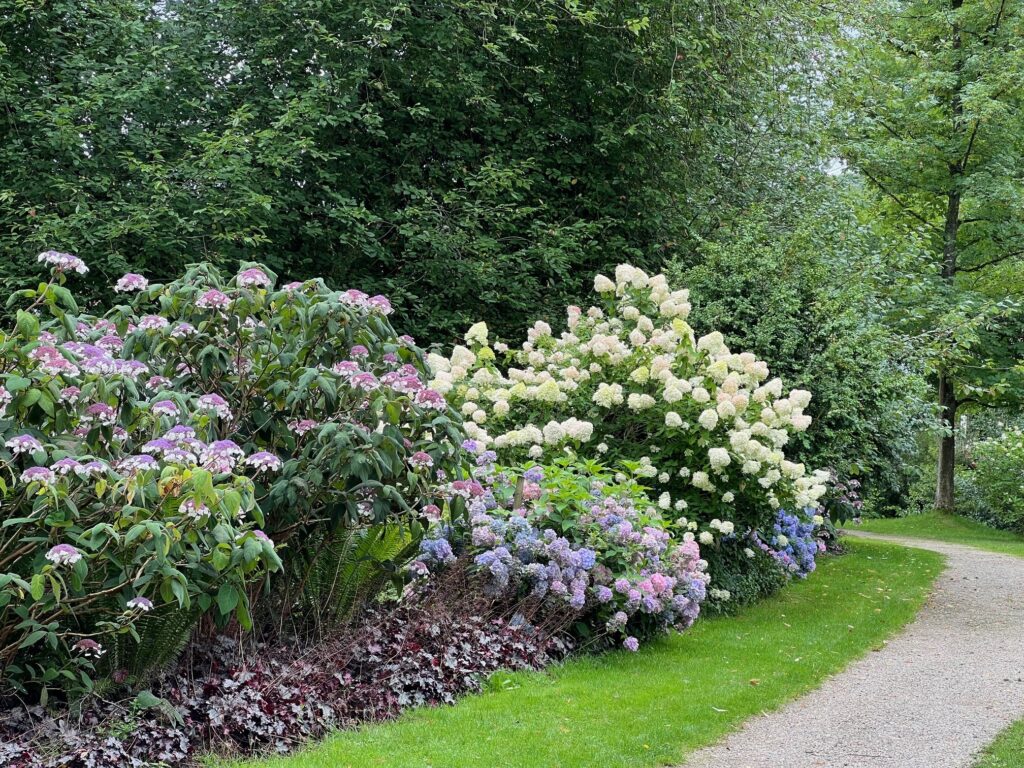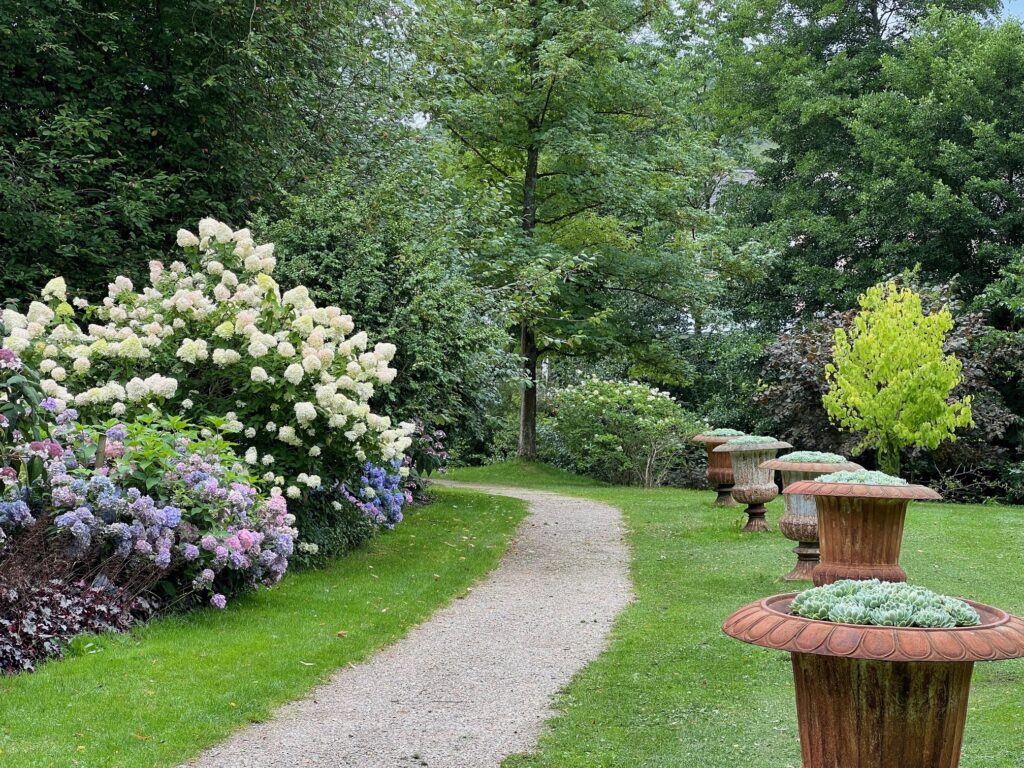To the east of the Wandelhalle is the Wandelgarten. Our changing garden is the gateway to the open landscape and consists of a central lawn parterre, a planted sunken garden with a water feature and a large perennial and hydrangea bed. Here there is a transition from the baroque palace park into the English-style landscape park.
Grass Parterre
At the east exit of the foyer is the lawn parterre, which leads directly to the avenue with North American swamp oaks and the adjacent colorful and species-rich wet meadows. The raised grassy parterre in the changing garden serves as an exhibition area for art objects and invites you to relax.
Water Feature
The sunken garden with water feature, built in 1953, is located in the Wandelgarten on the east side of the Wandelhalle. After 70 years, the original planting has changed completely. Instead of ivy and sedum, opulent varieties of dahlias, ornamental tobacco, white candles and the Indian reed are now blooming. The summer flora is also accompanied by structural plants such as the African Pennisetum and the fiery red leaves and fruit heads of the miracle tree. This gives the sunken garden with a water feature a tropical appearance. Especially in the quiet morning hours you can listen to the splashing of the water feature and enjoy the morning sun.
Perennial Garden
The perennial beds in the changing garden, which were created in 2014, are characterized by their island-like layout and the curved lawn paths. Daffodils and blue-flowering prairie lilies dominate the perennial beds in spring. In the course of early summer (from June) the flowering phase of the large star umbel (Astrantia major) begins together with lady’s mantle (Alchemilla mollis), iris and bulbous garlic. This is followed by perennial phlox (Phlox paniculata) and the phlox with its spike-shaped violet-pink flowers, which also attract butterflies and bumblebees. Another highlight is the flowering period of the large scale head (Cephalaria gigantea). The scabious-like and sulphur-yellow flower is a source of nectar from July to August and attracts countless insects such as bees. The perennial beds also contain special trees, such as laburnum (Laburnum watereri), medlar (Mespilus germanica) and the rarely encountered chestnut rose (Rosa roxburghii). Of course, these trees also contribute to the constant humming and buzzing in the perennial garden. In late summer there are the many large flowers of the autumn anemone (Anemone hupehensis) as well as the flower umbrellas of the bee-friendly purple bush (Eupatorium fistilosum). The wine-red flower color of the purple dost goes well with the first blue-violet blooming asters.
Hydrangea Bed
The hydrangea bed was also created in 2014. A wide variety of types of hydrangeas grow here on over 200 m². Protected and in the shade of the fragrant bird cherry, the hydrangeas grow into large bushes. Due to the humus and lime-poor soil as well as the high humidity, the Asian beauties have found the right location in the state spa. One of the well-known planted hydrangeas is the blue-flowering farmer’s hydrangea (Hydrangea macrophylla), which only retains its blue flower color when the pH value is low and trace elements are present in the soil. But also other hydrangea species such as the panicle hydrangea Hydrangea paniculata, which can reach a height of up to 4 m. The creamy white, cone-shaped flower spikes turn a pale pink as they fade. Even in the winter months, the golden-brown dried flowers decorate the bed. The velvet hydrangea Hydrangea aspera subsp is one of the rarely planted hydrangeas. sargentiana and the oakleaf hydrangea Hydrangea quercifolia. The velvet hydrangea impresses with its dull green leaves and two-tone flower plates. The 10 to 25 cm long white flower panicles open between July and August and then fade to pink. The autumn color of the oak leaf hydrangea is particularly beautiful. Their leaves then glow from orange to red to reddish brown.
Stay up to date and subscribe to our newsletter.
Mit einem Klick auf ‚Anmelden‘ willigen Sie ein, dass wir Ihre eingegebenen Daten verwenden, um Ihnen regelmäßig einen Newsletter zu schicken. Die Anmeldung müssen Sie noch bestätigen, indem Sie einen an Ihre angegebene Email-Adresse versandten Link anklicken. Ihre Einwilligung in die vorstehend beschriebene Datenverarbeitung können Sie jederzeit mit Wirkung für die Zukunft widerrufen, ohne dass die Rechtmäßigkeit der bis zum Widerruf erfolgten Verarbeitung davon berührt wird. Weitere Informationen können Sie unserer Datenschutzerklärung entnehmen.
Do you have any questions, are you planning a visit or are you interested in one of our offers?
Don´t hesitate to contact us.



